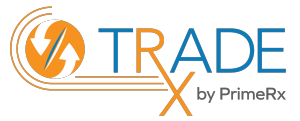All Trxade Suppliers Are Pedigree Compliant
(AKA Track & Trace)
Drug Supply Chain Security Act (DSCSA), July 1st 2015
What You Need To Know About Trxade’s Pedigree Compliance
Quick Version:
Have peace of mind that Trxade suppliers are 100% DSCSA compliant, and as always, we have you and your best interests covered!
Be Informed:
With the new Drug Supply Chain Security Act (DSCSA) requirements and processes pharmacies must follow, Trxade makes this transition even easier. Trxade has reached out to each Supplier and confirmed each Supplier’s Pedigree process to ensure compliance. We are compliant, our suppliers are compliant, shop away with confidence!
|
|
|
|
Through Trxade, you have direct access to Transaction Pedigree information via Electronic Web Portal, Invoice/Pedigree Request Combo at Point of Sale, or Directly Requesting Transaction History up to six years from point of sale from each Supplier. |
|
|
|
|
|
Each supplier will maintain point of sale transaction information, supply chain history, and transaction statements on behalf of Purchaser and provide access to documentation for up to six years after point of sale. |
|
ADDITIONAL INFORMATION
Drug Safety Via Track-and-Trace, You Are A Key Component
Title II of the Drug Supply Chain Security Act (DSCSA) of 2013 created a safeguard for patients to ensure they receive uncompromised medications. This system makes drug distribution affordable, clear, efficient, and transparent. The DSCSA has created a 10-year plan that includes an interoperable system to protect patients through national serialization and traceability of pharmaceutical drugs. There is a series of steps to be taken to reach complete electronic traceability and serialization by 2023. It will require product identification, product tracing, product verification, detection and response to any suspect drugs, notification of suspect drugs to the FDA, wholesaler and third party licensing reports.
Pharmacies: Steps Now (Steps 1 & 2)
The first step of this system was rolled in January 2015
- Pharmacies can verify that they are receiving legitimate medications through authorized suppliers via a document that they will receive containing a transaction history of drug shipments every company that has owned the drug.
The second step of this system is going live on July 1, 2015
- Pharmacies will be required to quarantine and investigate any suspicious drugs they have that may appear to be tampered with or are missing important information, such as the NDC code.
- Create standard operating procedures for unpacking drugs.
- The records of their investigation must be retained by the pharmacy for 6 years and any medication that is deemed tampered with, counterfeit etc., must be reported to the FDA.
Planning Ahead: 2017-2023 (Steps 3 – 5)
The third step is set to roll out in 2017
- Drug packages will have a two-dimensional (2D) bar code with a distinct serial number on it.
- It is recommended that the pharmacy check the authenticity of these serial numbers, but it is not required.
The fourth step is planned for 2020
- Pharmacies can only purchase drugs with these serial numbered, 2D bar codes
- A percentage of these serial numbers must be verified when conducting investigations into drugs that may appear unsafe, counterfeit, compromised etc.
The last and fifth step of this safety system is forecasted for 2023
- All pharmaceutical companies and pharmacies must be a part of the fully electronic traceability system that uses unique serial numbers to eradicate illegitimate drugs.
Diane Darvey, the Director of Federal and State Public Policy for the National Association of Chain Drug Stores, states explains how this new process includes the entire supply chain, “It’s a shared responsibility and team effort. Pharmacists play an important role in that.”
TRAINING: For those seeking “FDA” training, the FDA has posted a 22 minute recorded webinar: “DSCSA Updates and Readiness Check: Requirements for Dispensers and other Trading Partners Webinar“.
References:
